Audiovector Ki 1 Super Discreet System - £1,850
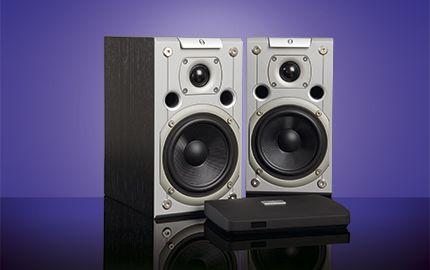
Apparently, wireless speaker systems are like buses. No sooner had Elipson’s impressive Planet LW and Bridge system passed through the Hi-Fi Choice review process (HFC 387) than the Audiovector Ki 1 Super Discreet System hovers into view. On paper, the similarities are striking. The Audiovector system comprises a pair of the Ki 1 standmounts and the company’s Discreet hub that form a self-contained system uncannily like the Elipson.
Audiovector has a long and distinguished history of going about the business of loudspeakers in a slightly different way to everybody else, though. The Discreet wireless system you see here is installed in the Ki 1, but thanks to the upgradable nature of the Audiovector range it is applicable to over 30 models in the company lineup and you can take an existing pair of passive speakers and convert them to this spec. The conversion process involves changing the terminal panel to include a pair of compact Class D amplifiers – one 40W and one 60W – and a switch that confirms whether each speaker is the left or right channel. More complex models include switches to alter in-room performance, but the Ki 1-based system does without that.
The revised back panel still features a pair of speaker terminals, but these now connect to the Discreet hub that is the second part of the active system. This is a small plastic chassis that is fitted with a matching pair of speaker terminals (and there is only a single pair, hence the need to decide between left and right on the speakers themselves) and a selection of inputs – two optical, one coaxial, an analogue connection on a 3.5mm jack and aptX Bluetooth. Audiovector makes slightly liberal mention of AirPlay before mentioning that this would require an additional AirPort Express to function, which needs to be taken into account. High-res 24-bit/96kHz playback is also only available via the optical connections with the coaxial limited to 16/48.
These are the only real omissions in an otherwise rather clever piece of equipment, though. The Audiovector’s trump card is that this pair of active speakers and hub only requires a single mains input as power is distributed via the dedicated run of speaker cables that is supplied with the system. This means that the system makes few demands on plugs, rack space and doesn’t require any significant investment beyond the active package itself.
The aesthetics of the Audiovector active system are perhaps unsurprisingly very similar to the passive version of the same speaker. The Ki 1 is a diminutive speaker, but feels solidly assembled and the drive units – a silk dome tweeter and a woven fibre mid bass driver are shared with the passive versions. The middle ‘Super’ spec of the three available levels of Ki 1 is supplied, which fractionally increases the frequency response over the standard Ki 1. The styling is a little on the busy side with a silver front panel that has a lot going on with drivers, bass ports and various fastenings all crammed into a fairly small space, but the effect is far from unpleasant.
The hub is unavoidably small and made out of plastic, but is soft to the touch and the small size means it is unobtrusive enough. The system of different coloured LEDs to denote different inputs is simple but effective and the Bluetooth pairing is easy and reliable. Audiovector doesn’t supply a remote, but other remotes can be made to control the hub and after some experimentation this works reasonably well. If all else fails, a volume toggle is fitted to the rear panel to allow physical adjustment.
Sound quality
Connected to a Cambridge Audio 752BD Blu-ray player via optical to act as a streaming source and a Lenovo ThinkPad connected over Bluetooth for testing streaming, the active Audiovector makes an interesting comparison to the passive Ki 1 Super that passed through as part of a group test (HFC 371). As might be expected, the fundamental character of the Audiovector does not change too significantly in the move from passive to active, but there are some little details that stand out.
The most significant of these is that where the passive Ki 1 Super trades off a little energy at the frequency extremes for midrange lucidity, the active system seems to roll off less at the top end than previously. There is an additional power to vocals and high-frequency instruments that gives the system some extra realism. This additional top-end grunt integrates well with the rest of the frequency response and doesn’t come at the expense of the lovely midrange cohesion that the Ki 1 demonstrates in passive mode. The bass response doesn’t have the same perceived augmentation although the figures suggest it is also enhanced over the passive version.
What this means is that with the 24-bit/96kHz FLAC of Pink Floyd’s The Division Bell, the Audiovector excels at delivering an energetic and consistently engaging performance that is wider and more expansive than the two diminutive boxes delivering the sound suggests is possible. The scale and assurance it has is the perfect foil for pretty much any genre of music you can think of, which when combined with the liveliness of the Ki 1 is an enticing combination. At the same time, the sense of fun never tips over into anything you might perceive to be inaccurate or coloured.
The decoding in the hub complements the Ki 1’s presentation exceptionally well and due to the symbiotic nature of how the two products work together, it is hard to tell where the attributes of one ends and the other begins, which surely must be the intention. Some parts of the performance are easier to pin down, though. The Bluetooth performance both in stability and range terms and in musical performance is exceptionally good and more than a simple convenience feature. In many ways it is a better partner to the optical connections than the inexplicably hamstrung coaxial connection.
Conclusion
As a package – and due to the way it operates it really can’t be viewed any other way – it does an awful lot right. On occasions, I have viewed the company’s inbuilt upgrade policy as being a little bit of window dressing, but here it makes a lot of sense. Viewed either as a straight purchase or an interesting upgrade, the Discreet system is compact, well finished and manages to take an already capable standmount speaker and extract a little more performance from it while upping the convenience levels at the same time. It isn’t completely perfect, but what it does it does with enough capability and assurance to make this a systemwell worth seeking out.
LIKE: Lively and entertaining; build quality; connectivity
DISLIKE: Not pretty; limited bass; oddly limited coax input
WE SAY: A distinctive highly effective take on the active speaker that makes a great deal of real-world sense
DETAILS
PRODUCT Audiovector Ki 1 Super Discreet
ORIGIN Denmark
TYPE Two-way active standmount loudspeaker
WEIGHT 4.15kg
DIMENSIONS (WxHxD) 140 x 260 x 220mm
FEATURES
• 3x digital, 1x analogue input
• aptX Bluetooth
• 1x 40W, 1x 60W Class D amplifiers
• 24-bit/96kHz digital processing (optical only)
DISTRIBUTOR Henley Designs
TELEPHONE 01235 511 166
WEBSITE audiovector.com
 |
Inside this month's issue: Arcam Radia A25 integrated amp, iFi Audio iDSD Diablo 2 DAC/headphone amp, Eversolo DMP-A8 streamer/DAC/preamp, Line Magnetic LM-845IA valve amp, Record Store Day Spring Drop, standmount loudspeaker Group Test and much, much more
|



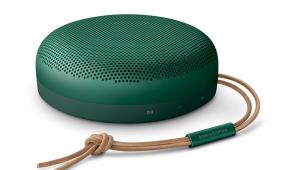
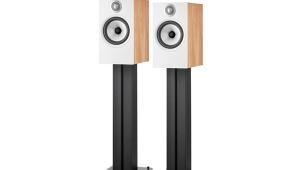

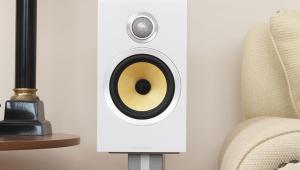
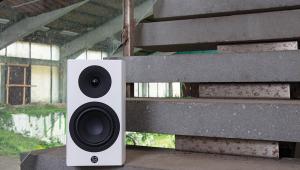
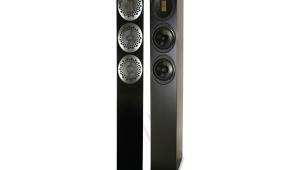




































.jpg)



